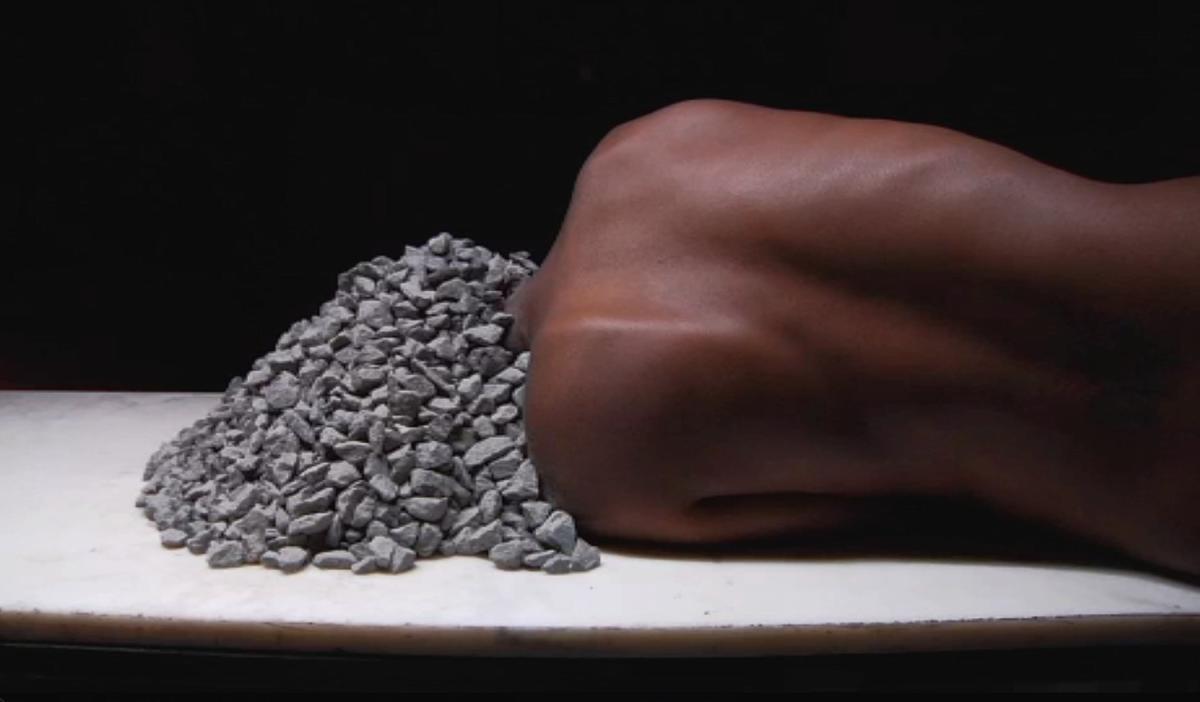
In my previous post, Seeing the Rainbow in SAAM's Collection, I shared how pop-up talks at last year’s Pride event, which highlighted works by LGBTQ+ artists in our galleries, sparked ongoing discussion of the complexities and nuances of referencing sexual identity within the context of an object’s wall label. The issues raised are particularly knotty for deceased artists, where self-definition is often not available and complicated by changing conceptions of and openness about sexuality. Recognizing that untangling that conundrum for historical works would take time, I considered how the insight from Pride 2019—that we had audiences eager to know there were LGBTQ+ artists on our walls year-round—might impact the presentation of a new acquisition by living artists.
The video My Dreams, My Work, Must Wait Till After Hell (2011), is a beautiful, meditative collaboration between Chitra Ganesh and Simone Leigh, working together as the artistic duo Girl. Set to a haunting score of Japanese flutes and drums, the image shows the unclothed back of a Black woman. She is lying on a marble slab, her head covered by stones, and her body almost perfectly still. The only noticeable movement throughout the entire seven minutes and fourteen second piece is the slight expansion and retraction of her ribcage as she breathes. At first, viewers often think they are looking at a projected photograph, only to be startled by a slightly larger or more staccato intake of air.
In light of the Pride feedback, I reached out to the two artists directly, who I know regularly identified as “queer women of color,” to see how they would feel about including this phrase in the label. Ultimately, we agreed that it did make sense to include their intersectional identities in the text, as this work responds to an art historical tradition—that of the reclining white female nude intended to titillate a presumed heterosexual elite audience—that had allowed no space for artists, subjects, or viewers like them. Hopefully, now, with this work and its artist-approved LGBTQ+-affirming label on long-term view, other self-identified queer women of color will know that there is space for artists, subjects and viewers like them at SAAM.
It is important to acknowledge, however, the way this space is carefully constructed by Ganesh and Leigh, as the woman in the video’s situation is precarious and unresolved. It is open to interpretation whether the performer has been injured by the stones or is resting peacefully beneath them; whether they were delicately piled on or thrown; whether they are hurtful or protective. The turned away body evokes both vulnerability and a declaration of strength and refusal—a refusal to be available to the desiring or controlling eye, to be laid bare before a stranger who does not deserve access. The video’s title comes from a Gwendolyn Brooks poem, in which life’s honey is saved as the speaker heads to war; whether the warrior will get to return and enjoy this sweetness is unknown. This borrowing suggests the artist’s see parallels in the defensive strategies Black people use to survive life’s daily hostilities. In the midst of nationwide uprisings against systemic racism and violence, sparked by videos of unarmed Black Americans being killed by police and fellow citizens, the double-edged sword that is visibility for those whose lives are not equally valued by white, patriarchal, colonial, heteronormative culture has been painfully reinforced. So, while this work holds space for experiences long underrepresented in SAAM’s galleries, it also asks us to acknowledge that visibility does not equal safety; having a place in the American story is not the happy ending. It is the beginning of the work for equity and justice, not the end.





















